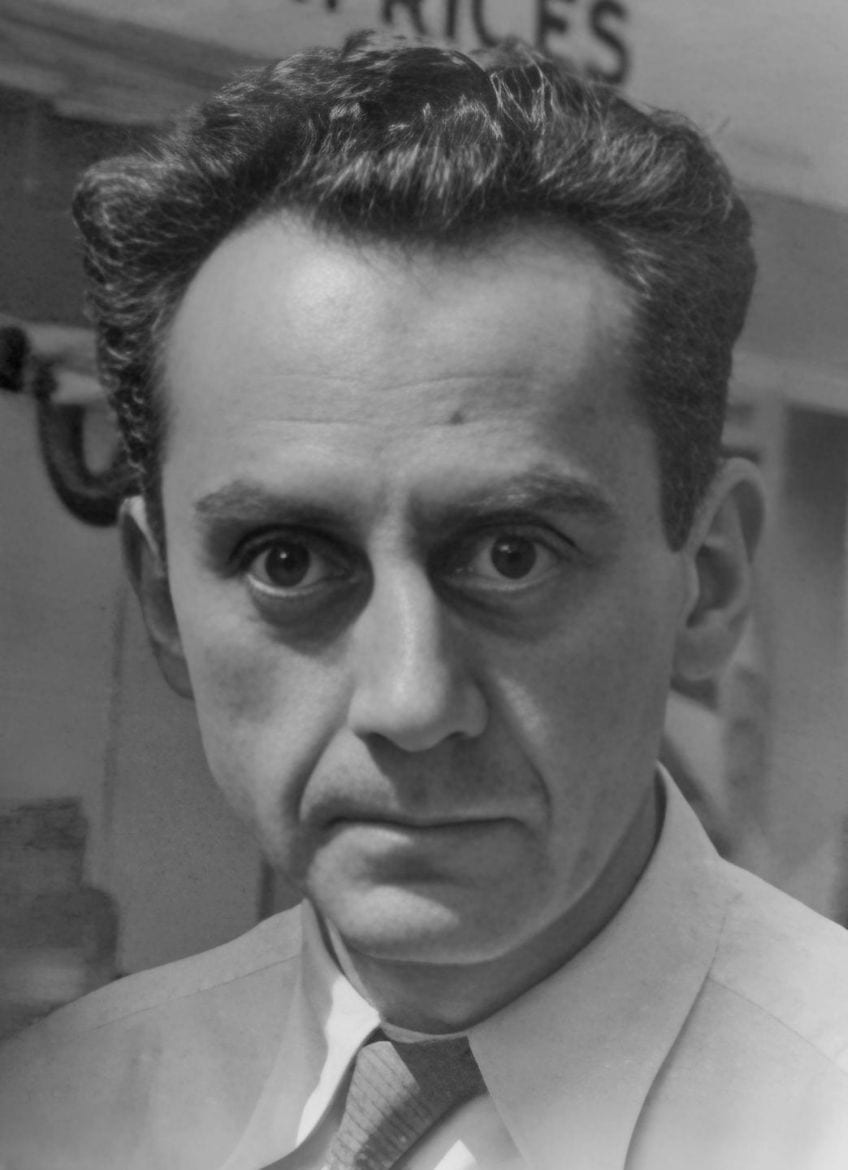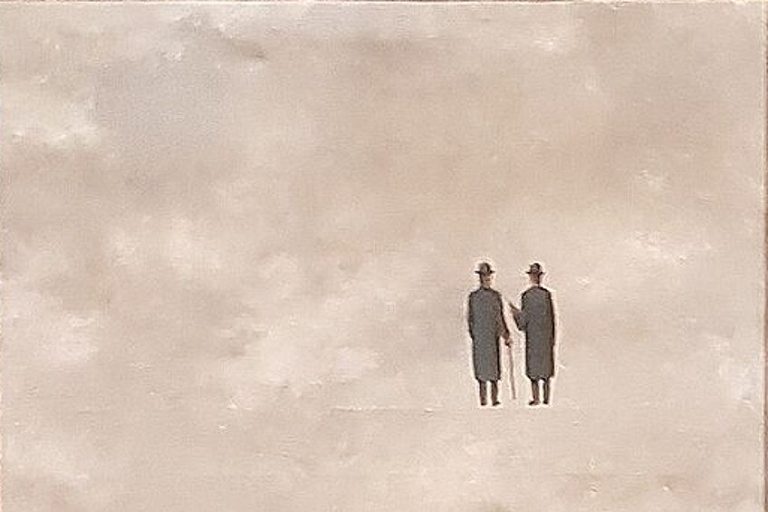“Observatory Time: The Lovers” by Man Ray – An Analysis
Welcome to the enigmatic world of Man Ray’s Observatory Time: The Lovers, where time transcends its usual constraints and love dances with the cosmos. In this surreal masterpiece, Ray invites us to peer through the lens of his imagination into a realm where celestial bodies collide with matters of the heart. With its hypnotic blend of symbolism and surrealism, Observatory Time: The Lovers beckons us to unravel its mysteries and discover the timeless embrace between art and the universe. Join us as we embark on a celestial rendezvous unlike any other, where the boundaries between reality and dreams blur, and love becomes an eternal cosmic dance.
Key Takeaways
- Observatory Time: The Lovers is a seminal work by Man Ray that exemplifies Surrealist art.
- The painting reflects the Surrealist movement’s exploration of the unconscious through dream-like imagery and symbolic forms.
- Man Ray’s influence on both art and photography underscores the enduring impact of “Observatory Time: The Lovers.
Historical Context
| Artist | Man Ray (1890 – 1976) |
| Date Created | c. 1932 – 1934 |
| Medium | Oil on canvas |
| Genre | Surrealism, Modernism |
| Period/Movement | Surrealist Movement |
| Dimensions (cm) | 100 x 250.4 |
| Series/Versions | Part of the Observatory Time series |
| Where Is It Housed? | Private collection |
| What It Is Worth | Estimated value varies, considered significant |
Observatory Time: The Lovers is an iconic piece by Man Ray, a prominent figure in the Dada and Surrealist movements. Created between 1932 and 1934, the painting is also widely known as The Lips, recognized for its depiction of a pair of floating, oversized lips above an ambiguous landscape. This oil on canvas serves as an intriguing symbol of Surrealism, which sought to unleash the creative potential of the unconscious mind. It was created in the midst of Man Ray’s profound involvement with the Surrealist movement, reflecting its unique stylistic nuances influenced by his personal experiences and relationships.

The artwork, entrenched in the Surrealist tradition, is characterized by its realistic illusionism and the use of organic forms that refer to human features in a fastidious and oblique way. Man Ray’s piece transcends a mere artistic expression, it embodies the Surrealist’s core objective to challenge perceptions and depict the world of dreams and the subconscious. Through the formal analysis of his work, one can explore the unique use of color, form, and composition that Man Ray employed to convey his artistic vision. Though originally a painting, Observatory Time: The Lovers has also been translated into the medium of photography, showcasing Man Ray’s versatility and pioneering work in both art forms.
The legacy of the painting continues to reverberate in the modern art world, inviting interpretations and fascination from art enthusiasts and critics alike.
Man Ray and Surrealism
Man Ray, an American visual artist, played a significant role in the development of Surrealism during the early 20th century. Surrealism sought to challenge conventions and explore the subconscious mind through bizarre imagery and unconventional methods. Observatory Time: The Lovers is widely viewed as an embodiment of Surrealist tenets, merging dreamlike elements with reality to evoke a sense of mystery and exploration of deeper truths.

Influences and Inspirations
Man Ray drew his inspirations from various sources, both personal and artistic. The repeated motif of lips in Observatory Time: The Lovers traces back to his intimate relationship with Lee Miller, whose lips are depicted hovering over the Paris Observatory. Furthermore, his experiences during the Dada movement, along with inputs from contemporary art developments, resonate within the painting’s iconography.
He challenges viewers to decipher meaning beyond the seen.
Formal Analysis
This section provides an in-depth formal analysis of Man Ray’s Observatory Time: The Lovers, examining the artwork’s subject matter, the use of symbolism and meaning, and the techniques and mediums employed by the artist.

Subject Matter
Observatory Time: The Lovers features a prominent pair of lips floating against a sky, which sprawls across the upper portion of the canvas. No human figure is present; instead, the lips dominate the visual field, drawing the eye to this isolated and enlarged feature.
Below, the hint of a landscape offers an unassuming backdrop.

Symbolism and Meaning
The lips in the artwork are often interpreted as a symbol of desire and passion. They are said to be the lips of Lee Miller, Man Ray’s muse and lover, making the painting deeply personal. The sky is taken from the view of the Paris Observatory, hinting at themes of time and the cosmos. This juxtaposition of the intimate and the infinite speaks to Surrealist preoccupations with dreams and the unconscious.
Observatory Time: The Lovers stands as a testament to the strong association with Surrealism and Dada movements, weaving its narrative through the threads of both artistic revolutions.
Its presence resonates not only within the confines of the art world but also within the broader realms of pop culture and modern art. Through its innovative approach and captivating symbolism, the painting has played a significant role in shaping public perception of Surrealist artwork, inviting viewers to delve deeper into the subconscious and embrace the mysteries of the universe.

Techniques and Mediums
Man Ray used oil on canvas to create a smooth, realistic portrayal of the lips and sky, a method characteristic of traditional paintings. Despite his association with photography and his creation of Rayographs (a unique type of black and white photo), in this piece, he adheres to classical painting techniques. His precision places Observatory Time: The Lovers as a testament to his versatility as an artist, bridging his work in American and European art scenes.
Man Ray’s technical proficiency reinforces his status as a pioneer.

Legacy of the Painting
Observatory Time: The Lovers by Man Ray is a work marked by its significant influence on Surrealist art and its enduring intrigue in contemporary discussions of art history. Observatory Time: The Lovers, created in the 1930s, has received meticulous preservation to maintain its integrity over the decades. While originally part of a private collection, the painting has been exhibited in various museums and galleries over the years, ensuring that it remains accessible to the public and art historians alike. The painting has been a focal point for critical analysis among art scholars. Its themes of love, eroticism, and surrealism have been dissected to showcase Man Ray’s contribution to Surrealist philosophy.
The depiction of lips in the sky directly speaks to the movement’s exploration of dreams and the subconscious.
The Artwork Today
Man Ray’s influential piece continues to impact artists and art lovers. The painting’s technique and thematic content are studied for their innovation and embodiment of Surrealist principles. It remains a subject of scholarly research and a valuable piece that encapsulates the spirit of its era.

Today, the legacy of Observatory Time: The Lovers endures as a beacon of artistic innovation and surrealistic exploration. Revered within the annals of art history, this iconic masterpiece continues to captivate audiences worldwide with its enigmatic symbolism and celestial allure. Its influence reverberates throughout contemporary art, inspiring generations of artists to push the boundaries of imagination and challenge conventional perceptions of reality. As a timeless emblem of love, mysticism, and cosmic wonder, Observatory Time: The Lovers remains a testament to Man Ray’s enduring legacy as a pioneer of Surrealism and a visionary of the human condition in all its transcendent beauty.
As we conclude our journey through the celestial realms of Observatory Time: The Lovers by Man Ray, we find ourselves lingering in the lingering embrace of its enigmatic allure. Ray’s masterpiece transcends the confines of time and space, inviting us to ponder the eternal mysteries of love and the universe. Like star-crossed lovers suspended in a cosmic ballet, the artwork whispers secrets of the soul and the cosmos, leaving us spellbound in its radiant glow. As we bid farewell to this surreal odyssey, let us carry with us the timeless echoes of Ray’s vision, reminding us that in the vast expanse of the universe, love remains the eternal guiding light.
Frequently Asked Questions
What Is the Meaning Behind Man Ray’s Observatory Time: The Lovers?
Observatory Time: The Lovers is often interpreted as a symbol of Man Ray’s tumultuous relationship with Lee Miller, an American photographer and model. The depiction of the lips is believed to be Miller’s, reflecting Ray’s longing after their separation.
What Techniques Did Man Ray Utilize in His Work, Observatory Time: The Lovers?
Man Ray employed the oil on canvas technique for Observatory Time: The Lovers, which is characteristic of his involvement with Surrealist art. The painting exhibits elements central to Surrealism, focusing on dream-like visuals that challenge conventional perception.
Isabella studied at the University of Cape Town in South Africa and graduated with a Bachelor of Arts majoring in English Literature & Language and Psychology. Throughout her undergraduate years, she took Art History as an additional subject and absolutely loved it. Building on from her art history knowledge that began in high school, art has always been a particular area of fascination for her. From learning about artworks previously unknown to her, or sharpening her existing understanding of specific works, the ability to continue learning within this interesting sphere excites her greatly.
Her focal points of interest in art history encompass profiling specific artists and art movements, as it is these areas where she is able to really dig deep into the rich narrative of the art world. Additionally, she particularly enjoys exploring the different artistic styles of the 20th century, as well as the important impact that female artists have had on the development of art history.
Learn more about Isabella Meyer and the Art in Context Team.
Cite this Article
Isabella, Meyer, ““Observatory Time: The Lovers” by Man Ray – An Analysis.” Art in Context. March 11, 2024. URL: https://artincontext.org/observatory-time-the-lovers-by-man-ray/
Meyer, I. (2024, 11 March). “Observatory Time: The Lovers” by Man Ray – An Analysis. Art in Context. https://artincontext.org/observatory-time-the-lovers-by-man-ray/
Meyer, Isabella. ““Observatory Time: The Lovers” by Man Ray – An Analysis.” Art in Context, March 11, 2024. https://artincontext.org/observatory-time-the-lovers-by-man-ray/.











